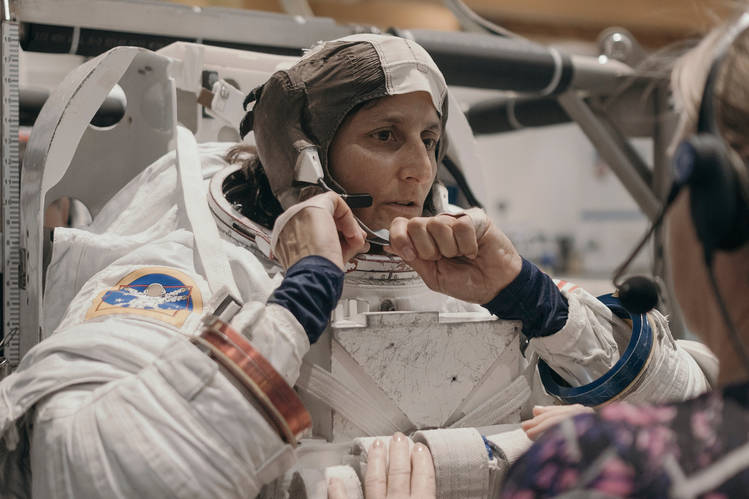WHAT'S IN YOUR BAG?
By HILARY POTKEWITZ
Sunita Williams’s commute is more harrowing than yours.
The Houston resident used to take a shuttle from Cape Canaveral, Fla., but that stopped running in 2011. Since then, she and her colleagues have been making a connecting flight through Baikonur, Kazakhstan, and boarding a Russian Soyuz craft for the final leg of their trip to the international space station.
The flight can be as short as six hours, but reaches speeds of about 17,500 mph to rendezvous in orbit.
Packing to leave the planet is no small feat. Ms. Williams, 51, has made trips to the space station of 195 days and 127 days.
Baggage preparations require at least a year of input from NASA scientists, doctors, nutritionists and engineers. Every item has to be vetted for compatibility with life in a zero-gravity, closed environment. Each astronaut gets a container the size of a large shoebox to fill with personal items.
“We try to make sure they take things that keep them connected to their families and lives back home,” says Shannon Hartman, a space station psychological coordinator. They include favorite snacks and comfort food wherever possible—in Ms. Williams’s case, peanut butter and Marshmallow Fluff, among other goodies.
But there are limits. Potato chips have no place in space, Ms. Hartman says. “They crumble at liftoff, creating a lot of dust.” Opening a package would release a flavored cloud hazardous to breathe in.
NASA recently selected Ms. Williams as one of the first astronauts to participate in commercial space flights. She’s been working with Boeing and SpaceX as they develop their programs. The first flights are projected for 2018, and Ms. Williams expects to bring many of the same items she has brought in the past.
In addition to family pictures, she brought an image of her Jack Russell terrier, Gorby, sewn into a cloth toy. “It was cool for school presentations, to show kids how things float,” she says.
Ms. Williams grew up in Needham, Mass. Her father was a doctor from India. She travels with a Boston Red Sox baseball cap and a copy of the Bhagavad Gita, a book of Hindu philosophy.
On her 2007 mission to the space station, Ms. Williams completed the first marathon in orbit when she ran a simulated Boston marathon on the station’s treadmill while her younger sister ran the marathon on earth.
Ms. Williams only brought one pair of sneakers to space. “Your shoes never get dirty because your feet don’t touch the ground,” she says.
Inside the space station, astronauts wear wool flight suits or utility pants and crew shirts. Their pants have Velcro on the outside to prevent things like camera lenses and tools from floating away.
On some trips, the Russians supply the clothing. “I told them to surprise me. On my first mission, everything was blue. I felt like a smurf,” she says.
Without gravity, the human body changes shape. “You have this fluid shift. Your head looks bigger, your legs look skinnier, your chest looks bigger. It’s pretty spectacular,” she says.
There isn’t much cooking in orbit—most food comes in sealed plastic bags that astronauts rehydrate or warm up by adding hot water. “Everybody has a spoon, and it’s theirs. I lost my spoon once for two days, and I was not a happy person,” she recalls. “We finally found it up against a vent.”
One thing Ms. Williams doesn’t bring to space? A pillow.
In zero gravity, there’s no need for head or neck support. Astronauts sleep in vertical bunks, like phone booths, “standing” inside sleeping bags.
“You’re floating in this booth-cocoon all by yourself, no light and no sound,” Ms. Williams says. “Some people bungee themselves to the wall so it feels like you’re in a bed. Those subconscious things are the hardest to get used to. It took me about a month.”













